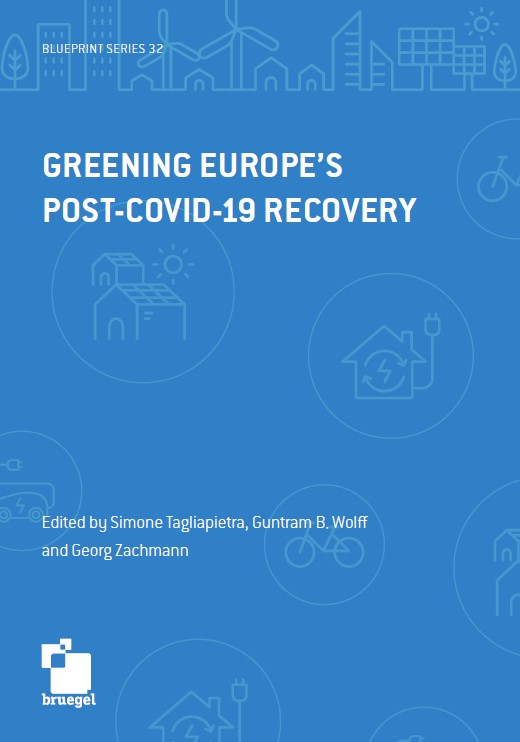Opinion
COVID-19 and India: economic impact and response
This piece was published the day before India imposed one of the world's strictest lockdowns in its response to the COVID-19 response. It remains relevant in assessing the government's actions in the ten weeks that have since passed.
- A group has been convened under the leadership of the Finance Minister to coordinate the government’s response to the economic and financial consequences for India of the COVID-19 virus. Some of these consequences are already evident; others will follow. Policymakers, here and elsewhere are dealing with massive uncertainty on both medical and economic fronts. Yet they need to act, as the costs of delay could be large.
- In all affected countries medical and economic imperatives are deeply intertwined. A lockdown (as imposed in New York, Milan and now New Delhi) is a medical act with profound economic implications, implications that will differ hugely in the work environment of the service sector in urban India from countries far richer than it. This requires that the overall policy response is coherent, and that actions in each sphere reinforce the other.
- In the midst of much uncertainty there is one thing to hold on to. As Martin Wolf has observed (in the Financial Times), a key difference between the present scourge and the 2008 financial breakdown is that the full force present shock, though potentially devastating, is expected to be temporary. ‘Temporary’ itself remains uncharted territory: an influential modelling exercise conducted at Imperial College, London (issued on March 16) simulates isolation between three and five months in order to reduce the reinfection rate, but warns that reinfection remains possible until an effective vaccine is available. The challenge for the Minister’s working group is to fashion an appropriate, graduated response for the period till India’s next scheduled budget eleven months from now.
- With regard to likely economic impact, it is useful to distinguish between first-round measures to contain the virus; second-round (or cascading) effects of these measures; and the impact on the economy of developments abroad. This classification echoes a recent analysis by Crisil which also differentiates between domestic and external sources of the shock. Such a taxonomy can help to anticipate the scale and timing of the economic impact. It can also help to identify the level of government where action is likely to be most effective: the principle of ‘subsidiarity’.
- As in other affected countries, the first-round economic effects are primarily linked to the need to restrict international travel and measures taken to impose ‘social distancing’ to slow the spread of infection. India in a patch-work way has chosen to follow the social distancing path in its urban areas, largely led by state governments. The direct impact of these health-driven measures is so far largely on urban incomes in the affected service sectors, both formal and informal: tourism and travel; formal sector retail; formal and informal catering and trade; and (largely informal) private transport.
- Second-round effects are those that result from this initial reduction in incomes, both through the expenditure multiplier but additionally through uncertainty among those not directly affected (leading them to postpone discretionary purchases) and, more importantly uncertainty among creditors of affected enterprises, particularly micro, small and medium enterprises (MSMEs) especially in the impacted services sectors. Uncertainty has already affected the financial markets, both reflecting a re-rating of the earnings prospects of listed firms, but even more, as noted below, because of the retreat of foreign portfolio investors (FPIs).
- The overseas channel is relatively straightforward. Global demand for India’s exports (both goods and services), already weak, will decline further. India’s supply response both domestic and export will be affected by shortages of intermediate inputs, perhaps even reduced logistics and transportation services. (Receipts from international tourism are classified as an export receipt in the balance of payments.) In addition, changing global risk aversion has already encouraged the outflow of portfolio capital, affecting both the stock market and the rupee: dollar exchange rate. These financial channels diminish spending by reducing perceived wealth and increasing stress on those corporates (and banks) with net unhedged foreign exchange liabilities. Not all is gloom however. The dramatic reduction in the price of crude oil represents a major improvement in the terms of trade of the nation, which is like a positive income transfer. The implication of this for the government’s macroeconomic policy response is discussed below.
- Given the expectation of time-bound reversal the core goal of the economic response should be to contain ‘hysteresis’ effects of the downturn: avoiding longer-term, even irreversible consequences, facilitating a ‘V-shaped’ recovery when the time comes. A less urgent objective could be to use the crisis to achieve policy goals that may difficult in more normal circumstances. As the overused but valid phrase has it, a crisis is a terrible thing to waste.
- These three principles: minimising hysteresis (supporting easy reversibility); subsidiarity (supporting local action by both official and civil society); and sustainability (retaining the ability to provide a graded response to ensure both political and economic confidence) provide a framework to guide policy. At the household and personal level (since many of the affected may be single men with families in their native place) I suggest three priorities for economic succour: first, to protect the well-being of children; second to provide MG-NREGA type income support to unemployed urban workers; third, relaxation of credit standards to owner-operators, typically in the informal sector, to provide working capital finance through the slump. A related, medical goal is to try and limit return migration to rural areas so as to contain infection to urban areas where containment is more feasible.
- Action on this agenda will largely be at the local and state level, except for the relaxation of credit guidelines. There will be the usual choice to be made between targeting those directly affected versus programmes that are open to all. In this emergency, state action should incline toward the latter, with civil society organisations taking on the burden of handling individual cases. Concern for young children has already been demonstrated by some state governments in maintaining mid-day meals even while schools are closed. Access to smart phones is already near-universal in urban areas. State governments could work with education NGOs like Pratham, Central Square Foundation and the Azim Premji Foundation to develop online material to fill the educational void that the next months might bring.
- By comparison with the eye-watering fiscal and monetary packages being developed by the G7 countries (the US, the EU and Japan) the above menu will seem timid. If the US does pass a package of around $1 trillion that would be of the order of 5% of GDP. While I am no fiscal hawk, particularly under these exceptional circumstances, I believe India should be cautious at this time, both because the sectoral imperatives are more urgent and because the future is so cloudy. Let others fire their bazookas. We are better off keeping some powder dry.
Republishing and referencing
Bruegel considers itself a public good and takes no institutional standpoint.
Due to copyright agreements we ask that you kindly email request to republish opinions that have appeared in print to [email protected].









